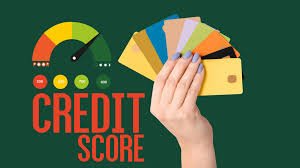The Strategic Blueprint for Enhancing Your Credit Score
A strong credit score is not merely a number; it is a critical financial asset that dictates access to capital and the terms under which it is offered. For individuals and entrepreneurs alike, a high credit score can unlock favorable interest rates on mortgages, auto loans, and business financing, potentially saving thousands of dollars over the lifetime of a loan. [1][2] It serves as a numerical testament to one’s financial reliability. [3] Improving this score is a deliberate process grounded in a disciplined understanding of its core components: payment history, amounts owed, length of credit history, credit mix, and new credit. [4][5] By strategically addressing each of these pillars, one can systematically and effectively elevate their creditworthiness, paving the way for greater financial stability and opportunity. This endeavor requires a multifaceted approach, moving beyond simple bill payment to a more sophisticated management of one’s overall credit profile.
The cornerstone of any credit score is an impeccable payment history, which accounts for the largest portion—approximately 35%—of a FICO Score. [6][7] Lenders prioritize this factor as it is the most direct indicator of a borrower’s reliability and the risk associated with extending credit. [5] A single payment that is 30 days or more past due can significantly damage a score and can remain on a credit report for up to seven years. [6][8] Therefore, the most impactful action is to ensure all bills are paid on time, every time. [9] For those prone to forgetfulness, setting up automatic payments or calendar reminders can be a simple yet powerful tool to prevent delinquencies. [6] If a payment has been missed, it is crucial to bring the account current as quickly as possible; the negative impact of a late payment diminishes over time as it is replaced by a consistent record of on-time payments. [6] For individuals facing significant challenges in meeting their obligations, proactively contacting creditors to work out a mutually agreeable payment plan can be a more favorable alternative to default, as most creditors prefer collaboration over the risk of non-payment. [10]
Beyond timely payments, the management of outstanding debt, specifically the credit utilization ratio, is the second most influential factor, constituting about 30% of a FICO score. [11][12] This ratio measures the percentage of available revolving credit that is currently being used. [13] Lenders view a high utilization rate as a sign of financial strain and an increased risk of default. [14][15] While a common guideline is to keep this ratio below 30%, individuals with the highest credit scores often maintain utilization rates in the single digits. [16][17] A practical example would be keeping a balance below $3,000 on a credit card with a $10,000 limit. [17][18] Strategically, paying down credit card balances is the most direct way to improve this metric. [6] Another effective tactic is to request a credit limit increase from your card issuer; if granted, this instantly lowers your utilization ratio, assuming your spending habits remain unchanged. [17][19] It is also beneficial to make multiple small payments throughout the month, rather than one large payment, to keep the reported balance consistently low. [17][20] Critically, one should avoid closing old, unused credit cards, as this action reduces your total available credit, which can inadvertently increase your utilization ratio and shorten the average age of your credit history. [6][21]
The longevity and diversity of your credit history also play a significant, albeit less weighted, role. The length of credit history, accounting for 15% of a FICO score, considers the age of your oldest account, newest account, and the average age of all accounts. [4][7] A longer history of responsible credit management provides lenders with more data to assess your reliability. [9] This is why it is often advised to keep older accounts open, even if they are used sparingly for small, recurring purchases to maintain activity. [18][22] For those new to credit, establishing a history early is paramount. [22] This can be achieved through tools like secured credit cards, where a cash deposit acts as the credit line, or credit-builder loans, which are specifically designed to report positive payment history. [1][10] Another powerful strategy is becoming an authorized user on the account of a family member with a long and positive credit history, which can effectively “piggyback” their good standing onto your report. [11][23] The credit mix, representing 10% of the score, reflects your ability to manage different types of debt, such as revolving credit (credit cards) and installment loans (mortgages, auto loans). [4][17] While a diverse mix is beneficial, it is not advisable to open new accounts solely for this purpose, as the resulting hard inquiries can temporarily lower your score. [1][24]



